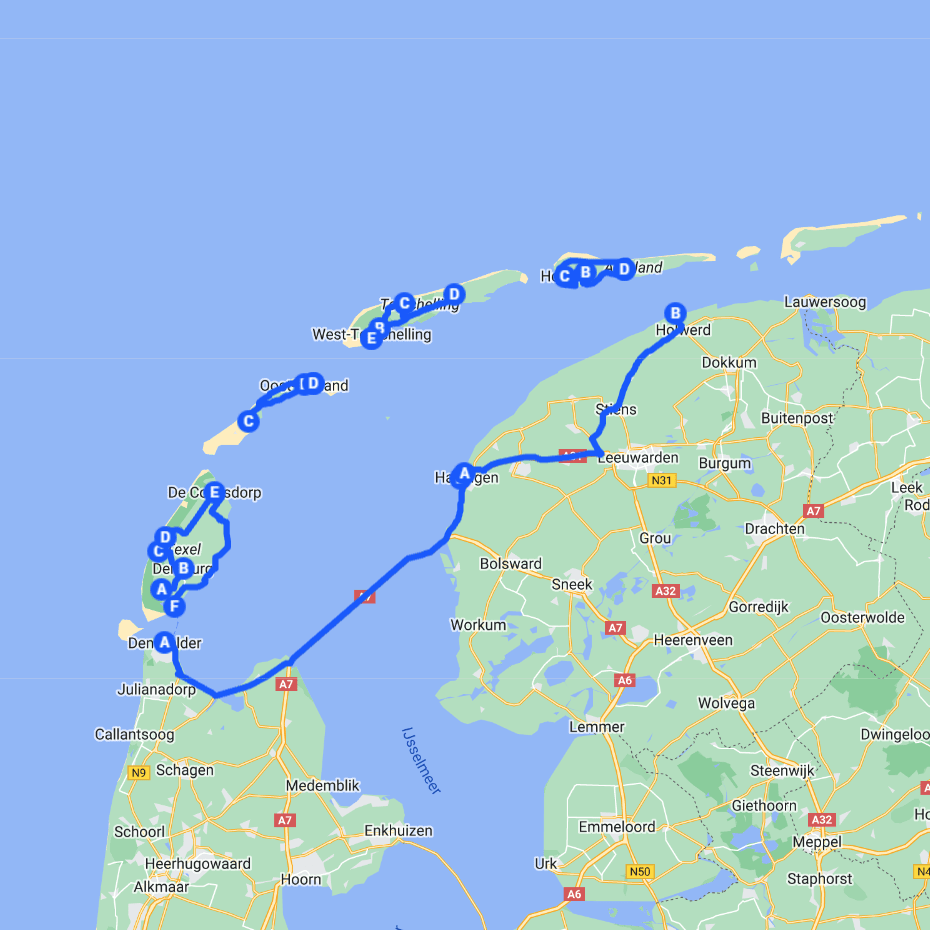Dutch Wadden Islands
Most Nomads think of a roadtrip as long trips, while the Dutch Wadden Islands are perfect for an extended weekend or a week's holiday by camper, car or motorbike. On each of the islands, there are many beautiful walking and cycling routes, quaint villages, impressive lighthouses and plenty of opportunities to spot seals. This road trip along the Wadden Islands starts on Texel, the largest Wadden Island of the Netherlands. With the ferry from Den Helder, you reach this island in less than half an hour. After Texel, Vlieland, Terschelling and Ameland are also on the agenda. Don't forget to bring your bikes, because exploring the islands is so much more fun by bike.
Total distance of the route: 204 km
Texel
Once on Texel, we drive to the southernmost village of Den Hoorn, known for its romantic white church. It is probably the most photographed church in the Netherlands, so a photo cannot be missed. If you would like to take a look inside, this is only possible on Tuesdays, Wednesdays and Thursdays. If you travel in the spring, Den Hoorn is also a lovely place to walk among the flowering tulip fields, but there is not much else to do in this small village. We travel on to Den Burg, the largest village on Texel. It is located approximately in the middle of the island and offers a lot of nice shops and good restaurants. After a pleasant morning stroll on the bustling market square in the centre of the village, we drive towards the sea. Soon, we drive through the Dunes National Park, which stretches along the entire west coast of the island. It is ideal for getting a breath of fresh air on the beach, in the woods or among the dunes. There are many well-signposted walking and cycling paths to explore this varied landscape.
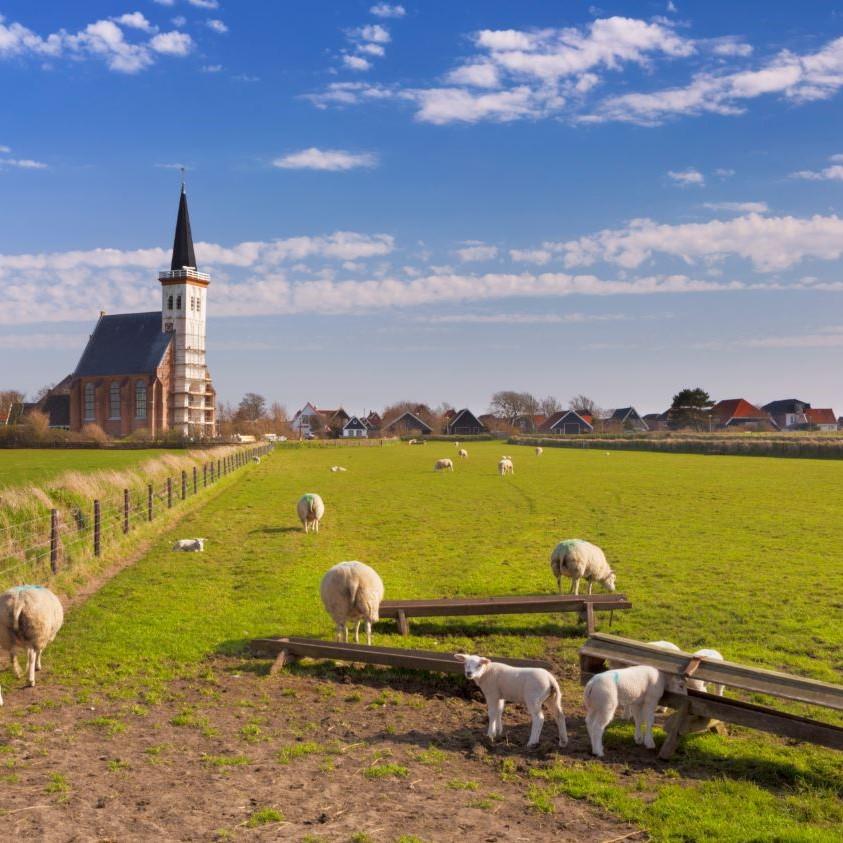

Would you like to learn more about the origins of National Park Dunes? You can do so in the Ecomare nature museum. You will learn everything about the Wadden Sea, the North Sea and the island of Texel. However, the real attraction at Ecomare is the many sea creatures. Seals, porpoises and other injured or weakened animals are brought in and cared for here. As a visitor, you can watch the animals being fed every day and who knows, you might even get the chance to see one of the cured animals being released back into the sea. If you prefer to admire the seals in their natural habitat, a boat trip around the island is a good idea. We drive further to De Koog, the only village on the island situated directly on the Noordstrand, which makes it ideal for a day at the beach. For those who like it a bit more active, there are numerous water sports possibilities such as surfing or sailing. In the most northern point of Texel, De Cocksdorp is located where the lighthouse immediately attracts attention. Climb the lighthouse to find out more about its fascinating history and from the top enjoy the view over Texel, the neighbouring island of Vlieland, the North Sea and the Wadden Sea.
Vlieland
From De Cocksdorp it is a half hour walk or ten minutes by bike to the Waddenveer jetty. Here we take an early ferry for a day trip to Vlieland. However, the camper van, car or motorbike has to stay on Texel, because Vlieland is car-free. The island is fortunately only twelve kilometres long and nowhere wider than two kilometres. You can take your own bike on the ferry, hire one in Vlieland or explore the island on foot. Once we have arrived by ferry, we take the boat to the sandbanks in the village. Here you can see the seals up close during low tide. Have you spotted enough seals on Texel and would like to walk on the bottom of the sea? Then two hours before low tide you can board Phoca in the harbour for a three hour wadden trip. During the trip you walk in and along salt marshes, mud flats, sand banks and deep gullies. Prepare yourself well, because it is a tough trip with a big chance of wet socks.
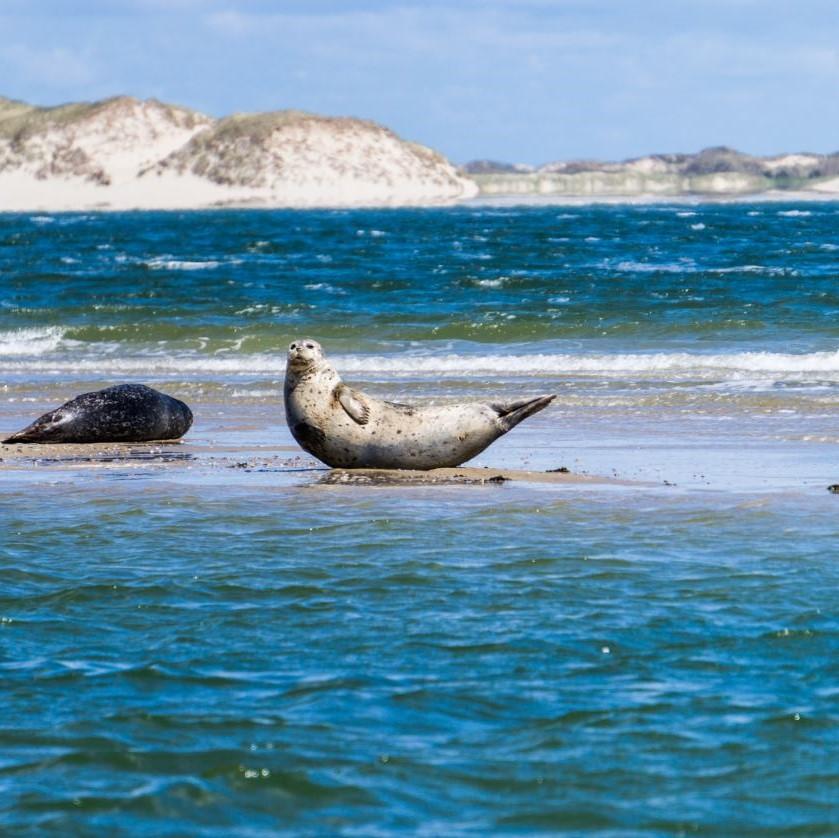
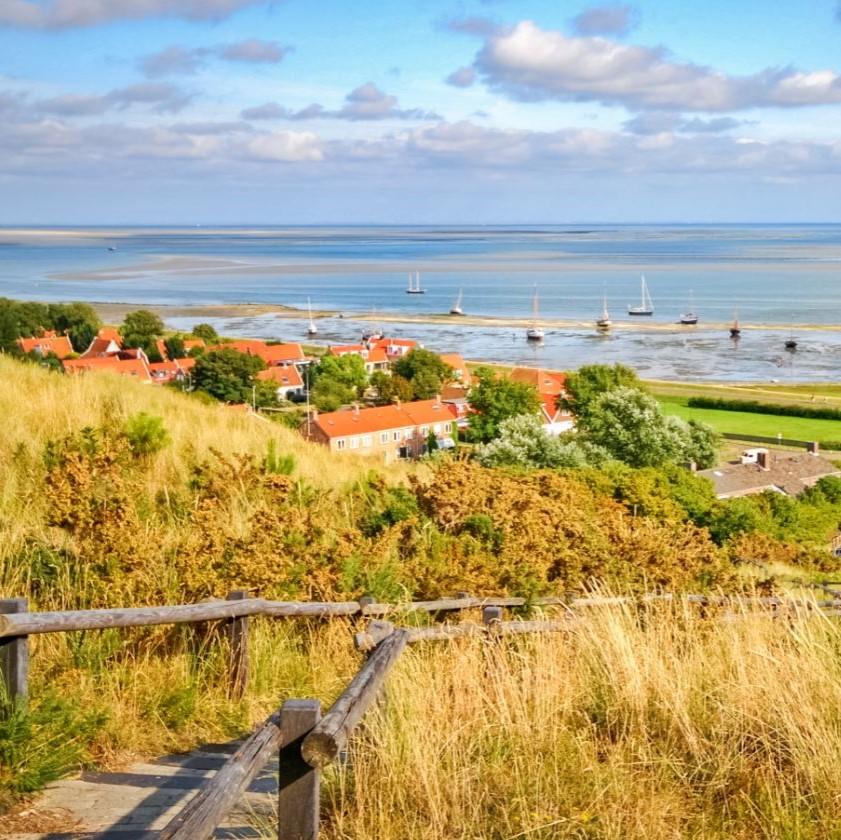
After the boat trip, we jump on our bikes and follow the track towards Oost-Vlieland, the only village on the island. When you arrive in the village, you can go to museum Tromp's Huys to learn more about the history of Vlieland or you can go to De Noordwester, where the sea aquarium and the enormous skeleton of a sperm whale are impressive sights. Then we will cycle in the direction of Vliehors. Vliehors is the largest sandy plain of North-western Europe and is also called the Sahara of the North. Those who wish to do so may opt for a safari across the sandy plain with the Vliehors Express. On the way, we pass Vuurboetsduin, a real eye-catcher. On top of this forty metre high dune is a lighthouse which is open to the public. It is easily accessible both on foot and by bicycle. After Vliehors, we return in the direction of the harbour. We choose the route along the sea and enjoy the sun, the sea and the beach for a while, before boarding the ferry which takes us back to Texel.
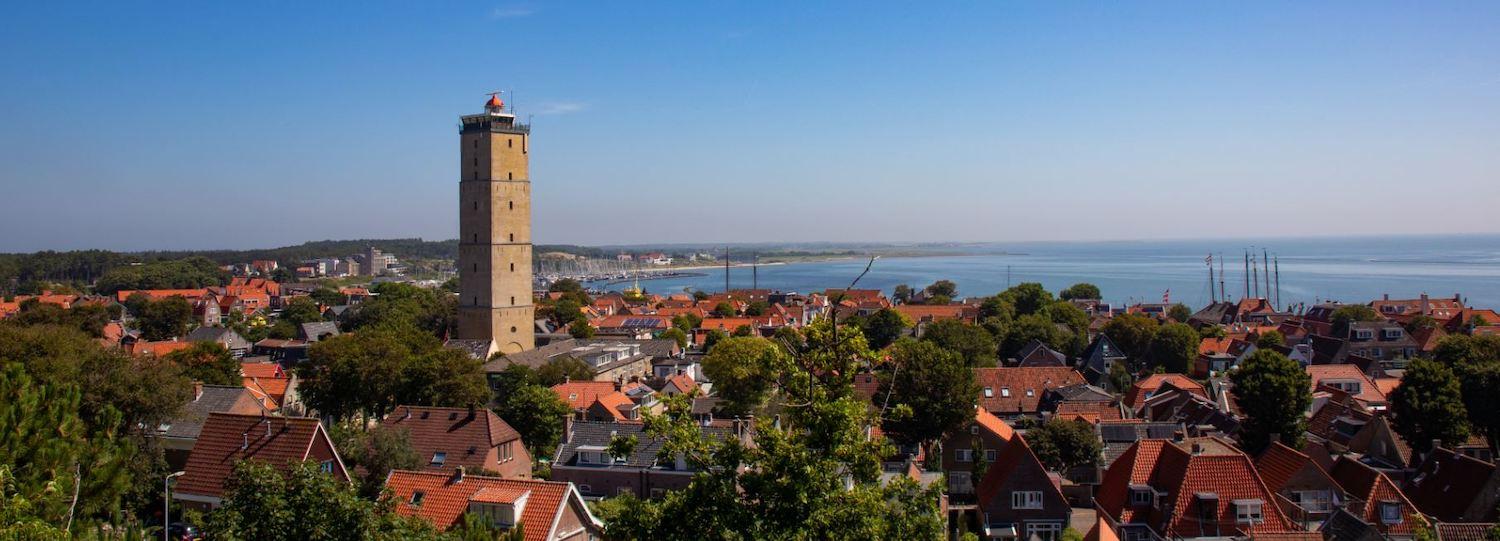
Terschelling
Once we are back on the island of Texel, we take the ferry to the mainland. There we take the shortest route to Harlingen, where we board the next ferry. This ferry takes us to Terschelling. This Wadden Island can be rediscovered by motor home, car or motorbike. After the crossing of about two hours, you will be welcomed on Terschelling by the Brandaris, a majestic lighthouse. It is the oldest lighthouse in the Netherlands and is still in use. We drive further towards the north side of the island to take a break on the beach, sunbathe and walk. On our route, we pass the Bunker Museum Tigerstelling. Terschelling played an important role in the air war over the Wadden islands and the North Sea in the Second World War. Therefore, you will find numerous bunkers scattered across the island. In the open-air museum Tigerstelling, you will be taken back to the war history of the island and given a tour of some of these historic bunkers.
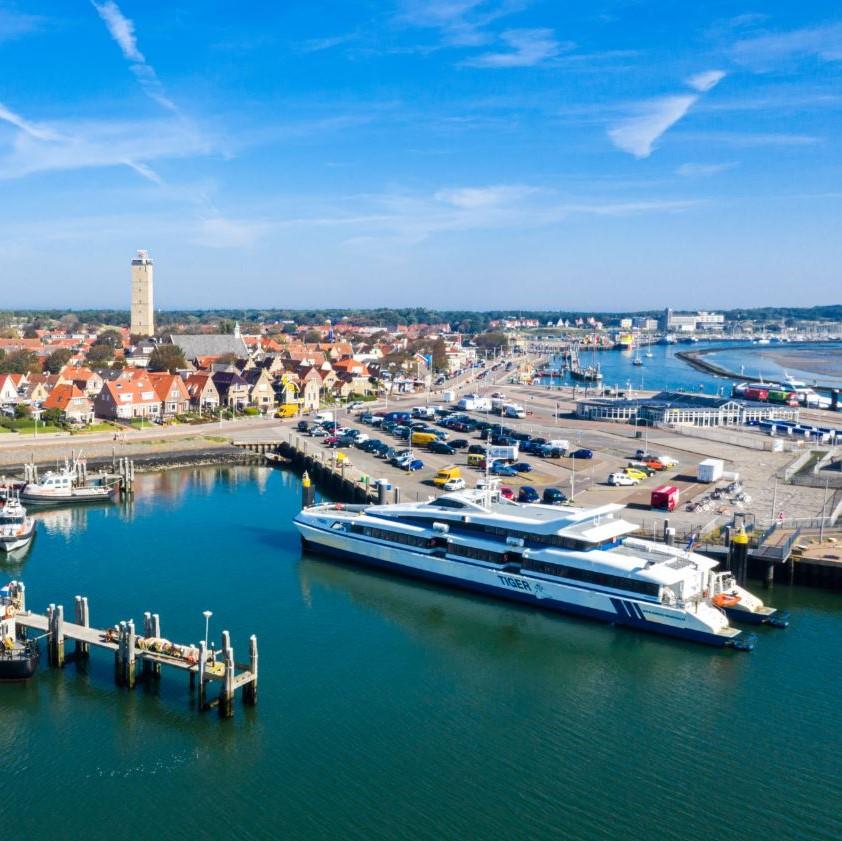
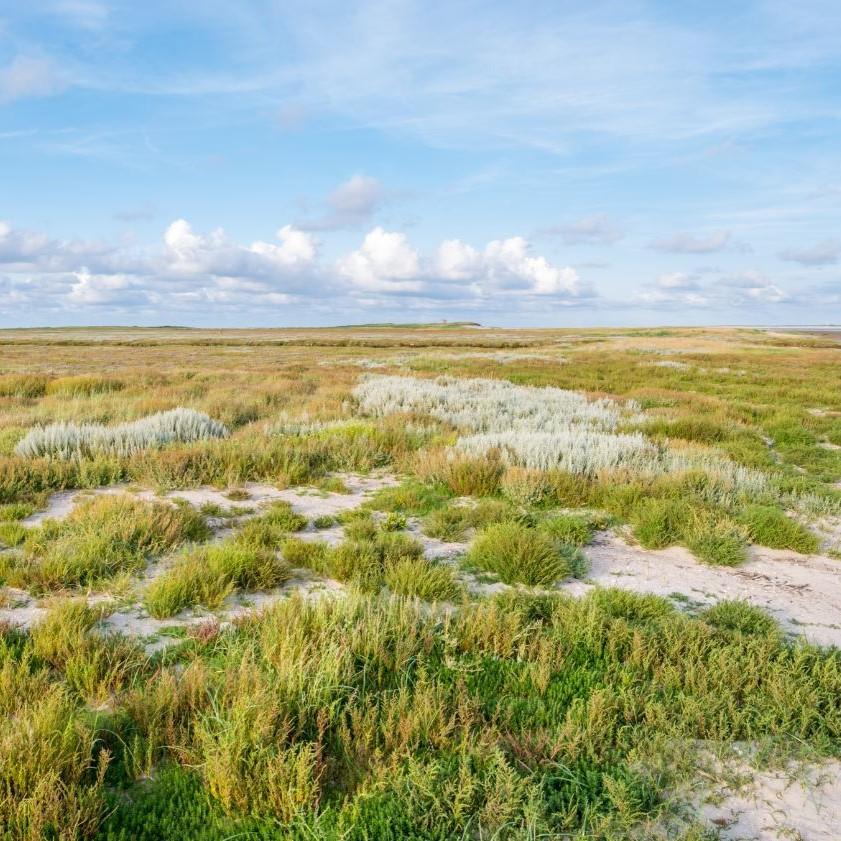
After a relaxing day at sea, we drive to the Boschplaat nature reserve. Here, nature can take its course almost undisturbed. The sea floods the dunes and salt marshes, causing various unique plant species to grow there. A walk through this beautiful piece of nature is therefore highly recommended. A footpath runs along the shifting dunes to the end of Boschplaat. The south coast of the island is also worth a visit. Here, Terschelling borders on the Wadden Sea, where hundreds of thousands of migratory birds land in the spring and autumn to get ready for their long journey. Finally, make time in Terschelling for one of the popular pastries or drinks with cranberries. The little red berries grow all over the island and are used for many local dishes.
Ameland
To go to Ameland by camper van, car or motorbike, we first have to take the ferry back to Harlingen. From there, it takes about 50 minutes to get to Holwerd, where we drive the camper onto the boat to make the crossing to Ameland. On the island itself, it is best to leave your vehicle on the parking lot and discover the surroundings by bike. The village centres of Hollum and Nes are car-free. During our first day, we will go by bike to Nes, Ballum and Hollum. In each of these three villages, you can still see many buildings and houses from the seventeenth and eighteenth centuries that show the history of Ameland. In Hollum, you can even find a number of Commandeurswoningen with richly decorated facades. The facade used to show the rank of the occupant in whaling. If you cycle a little further in the direction of the coast, you will arrive at Bornrif lighthouse. After climbing the 236 steps, an impressive view of the island awaits.
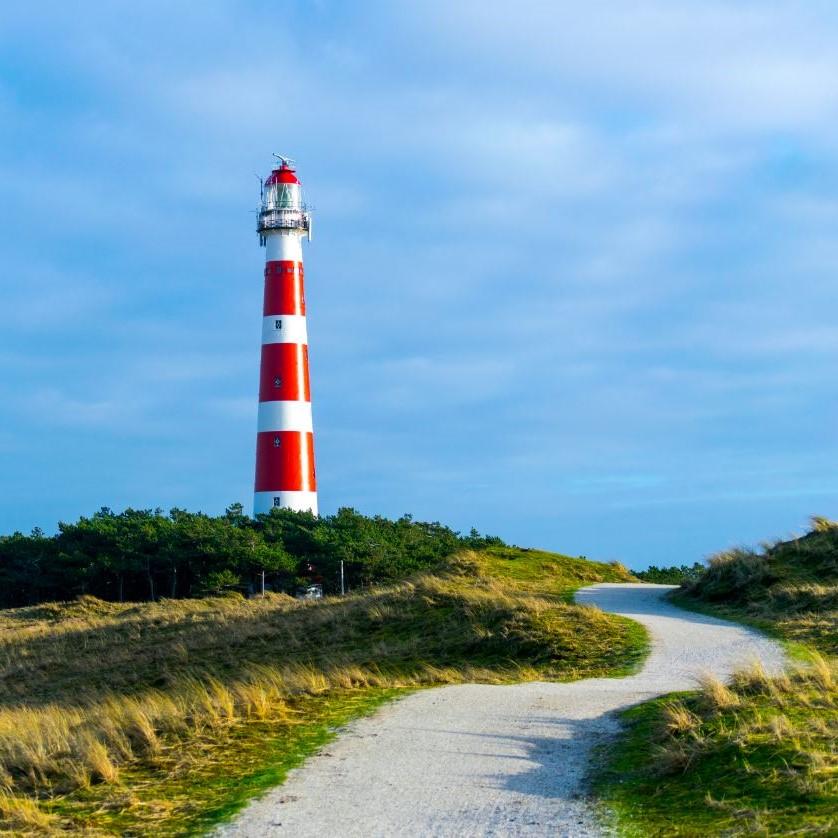
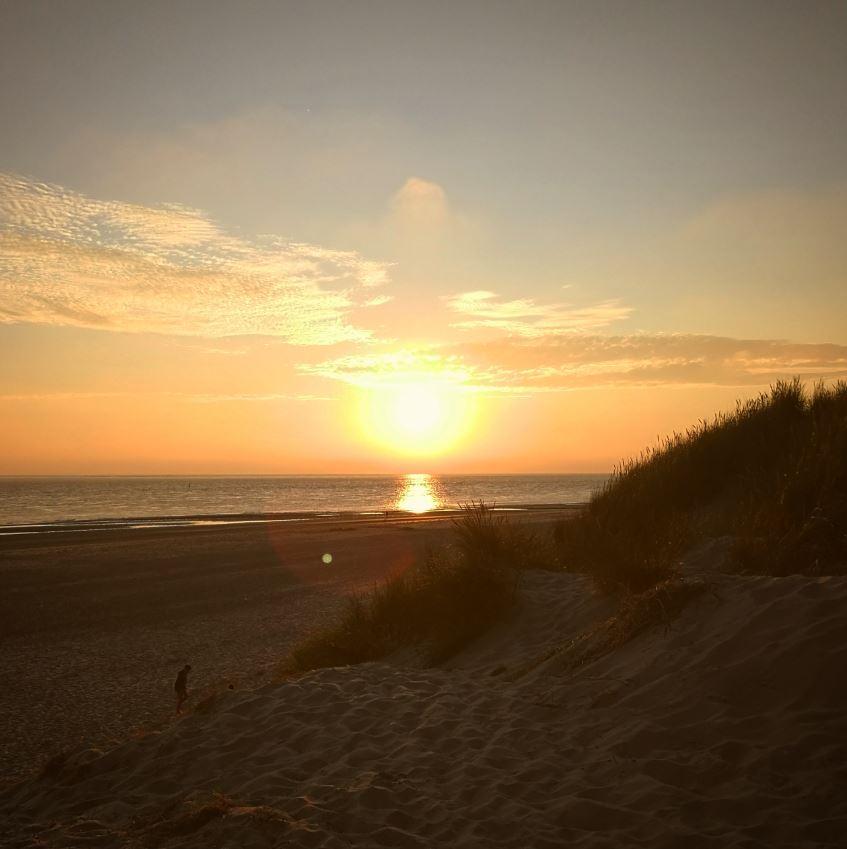
On day two in Ameland and the last day of our road trip, we put on our hiking boots for a walk in the nature reserve Het Oerd. The area is located in the east of the island and is great for hiking. In spring, however, the area is closed to visitors because the common gull and the hen harrier, among others, have their nesting places here. Afterwards, we take the bike to Hollum beach. This beach is on the other side of the island, but because of the enchanting sunset and the view on Terschelling, it is considered the most beautiful beach of the island. The next day, we take the ferry for the last time on this road trip and drive back home.
If you liked this route, it's a good idea to also put the Wadden Sea islands of Denmark on your wish list. One of these islands is Rømø, the starting point of our road trip through Denmark.

